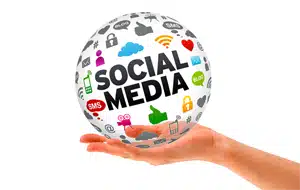The social media marketing environment was initially challenging to handle. Building real relationships on organic social media and using paid social media, which provided the opportunity to swiftly reach a wider audience, were the two main approaches, and I was frequently stuck between the two. Only later did I realize that each technique had its purpose. With paid vs. organic social tactics, I was able to build strong relationships with my audience through organic social media and gain their trust and loyalty. Paid social media has also proven to be a helpful tool for rapidly reaching new audiences.
It wasn’t always easy to decide which approach to take for particular purposes. In this article, I’ll discuss my experience striking a balance between paid vs. organic social media tactics and offer insights into how both might benefit a brand. Making the right decision for your brand can be aided by knowing the advantages and disadvantages of both targeted advertising tactics, whether your goal is to increase sales or attract more customers.
Key Points
- Integrating paid and organic tactics is essential for social media success to increase reach and foster community.
- Over time, organic social media helps build trust and loyalty by fostering sincere interactions with followers.
- The benefits of paid social media include targeted outreach and instant visibility, which are crucial for campaigns or new product launches.
- Both the impact of paid advertising and organic social engagement depend on interesting, high-quality content.
- Informed choices and ongoing social media strategy improvement are made possible by combining knowledge from both paid and organic social media initiatives.
Overview
Social media marketing has changed significantly during the past few years. methods for emphasizing communication and creating a more personal and genuine online persona. Every stage of the customer journey—including client acquisition, retention, remarketing, and service—is being carried out through social media. The distinction between search engine optimization and paid advertising is comparable. Organic social media activity is defined as any engagement that does not include paid promotion. It makes use of free social media platforms to build and engage an online audience.
Anything that is impacted by spending on social media is referred to as paid social, or social media advertising. In other words, paid posts or ads that companies pay a social media platform to show to audiences other than their followers. For this kind of promotion, cost-per-click (CPC) is one of the most popular ways to charge. With paid vs. organic social media tactics, to interact with and grow the number of your customers while expanding your brand’s reach to a wider audience, paid and organic social media tactics complement each other the best.
Compared to organic social media, bought social media is less important in full marketing strategies. Instead, they merge the strengths of these two approaches. Investing in paid social media possibilities is becoming more and more crucial as organic reach on social media platforms keeps declining. On Facebook, only a few followers can see organic posts.
Also Read: Paid vs. Organic Search: Which Strategy is Right for You?
Ongoing success, however, requires organic social media to prevent spending every single penny on paid social media. Even if organic reach is decreasing, organic social media still has a lot to offer. Extending your network through social sharing offers a fantastic chance to freely market your business and goods to a devoted audience. Audiences will stay to see what comes next as long as marketers concentrate on providing value rather than continually assaulting audiences with sales pitches.
Utilize organic social media and other marketing initiatives to find the content that connects most with your audience before promoting it to make your marketing budget go even further. Experiment with organic social media, email campaigns, and other low-cost or free strategies before using the results for paid social media promotions and ads. This will save you time when experimenting with your paid social campaigns. Keep an eye on statistics for both paid and organic social media posts to find the best times and days to publish.
Understanding Organic Social Media
Any content that is freely submitted on social networks by any user is considered organic social media. It is the text, photos, and videos that appear in your feed and are either provided to you by the seeing algorithm or by the individuals, companies, and brands you follow. Relationship development is at the core of organic social networking. At first, I wanted to encourage participation without investing in advertisements. Everything I share on my brand’s social media accounts, including posts, anecdotes, and conversations aimed at developing a real following, is considered organic content.
With time, I realized that organic social media was ideal for building a brand community. It made it possible for me to communicate with fans directly, earn their trust, and cultivate loyal customers. Growth, though, was slow. I discovered the importance of patience and consistency in organic social interactions.
Organic Social Media Pros
The advantages of organic social media are as follows:
#1. Creating Real Connections
My audience and I have developed sincere relationships, which is one of the best things about concentrating on organic social media. I feel like I’m letting my audience join me on my brand’s journey when I offer anecdotes, behind-the-scenes stuff, or discussions. As a result, I have a devoted following of people who care about my work.
#2. Cost-Effective Strategy
Since I was first working on a limited budget, organic social media was ideal. I discovered that all it took was creativity and perseverance to produce interesting content; money was not necessary. It gave me great delight to watch my following develop without having to worry about spending money on advertisements.
#3. Improved Engagement
I’ve found that when compared to paid advertisements, organic content frequently results in higher engagement rates. I get more interaction and comments from my followers when I post relatable stuff or seek feedback. Since this engagement is based on genuine curiosity rather than an advertising push, it feels more important.
#4. Long-Term Growth
I eventually concluded that organic social media promotes long-term development. My readership gradually grew as I continued to publish insightful posts. These supporters eventually turned into brand ambassadors, spreading my content and referring me to others.
Cons of Organic Social Media
The drawbacks of organic social media include the following:
#1. Slow Growth
I frequently felt disappointed by the slow progress, even though I valued the genuineness of organic involvement. It takes time to develop a strong following, and there were days when I thought my efforts weren’t yielding the results I had hoped for.
#2. Resource-Intensive
Creating high-quality material consistently takes a lot of time and work. I devoted a lot of late nights to thoughts, visual design, and interaction with followers. Although I enjoyed doing it, I frequently felt overburdened by handling everything.
#3. Restricted Reach
I soon discovered that because of algorithmic restrictions, just a tiny portion of my followers would view each post. Putting work into a post just to find out that many of my followers would not see it at all was discouraging.
Understanding Paid Social Media
Paid social media is just that—paying for advertisements to be posted on social media platforms. You’ve probably seen postings with a small notice that reads “Ad” or “Sponsored” in the upper or lower right corner if you use social media. Upon including paid social media into my plan, my approach evolved. I started focusing on audiences that were unfamiliar with my brand and expanding my reach beyond my followers. I discovered that, with targeted demographics, I could quickly reach a far wider audience with paid advertisements.
The outcomes were nearly rapid: I noticed an obvious spike in website traffic and conversions, and my brand’s awareness increased. But I also observed that, in comparison to organic posts, interaction was frequently lower. Even if it produced leads, the audience was aware that it was an advertisement and that long-term partnerships weren’t always the result.
Pros of Paid Social Media
The benefits of paid social media include the following:
#1. Direct Visibility
The immediate exposure that paid social media offers is among its most alluring features. When I launched my first advertising campaign, I saw an almost immediate increase in website traffic. The speed at which new consumers were finding my brand was exciting.
#2. Expandability
One of the biggest advantages was that I could grow my campaigns. I could start with a modest budget, evaluate what worked, and then increase my investment in advertising that was effective. It was simple to maximize my efforts without going over budget because of this flexibility.
#3. Specific Reach
For me, the ability to target specific audiences with paid social media changed everything. By customizing my advertisements according to demographics, hobbies, and behaviors, I could make sure I was reaching the correct people. I was able to connect with potential clients who were more likely to interact with my brand because of this planned, focused approach.
Negative aspects of paid social media
Paid social media has the following drawbacks:
#1. Costly
Despite the obvious advantages, I soon discovered how costly it can be to manage successful sponsored campaigns. I had to carefully watch how much I spent, especially while I was experimenting with new ad styles and targeting possibilities.
#2. Low Organic Involvement
Paid postings, in my experience, frequently lacked the sincere interaction seen in organic content. I questioned whether these advertisements were useful for establishing lasting relationships because followers occasionally saw them as distractions rather than meaningful information.
#3. Fatigue from Ads
My viewers might easily grow tired of seeing the same advertisements over and over again, I discovered. It became vital that I update my campaigns frequently to keep people interested and involved. If not, I would run the risk of my investment yielding diminishing returns.
Organic vs. Paid Social: Which Strategy Drives Real Results for Your Brand?
Throughout my brand’s social media journey, I continuously balanced the benefits and drawbacks of paid vs. organic social media tactics. Because it enabled me to establish sincere connections and have deep discussions with my followers, I first placed a lot of emphasis on organic social media. I discovered that publishing regular, high-quality material progressively expanded my following, and their trust and loyalty turned into one of my brand’s most valuable advantages.
But as I tried to reach more people faster, I became aware of how powerful paid social media might be. I was able to target particular demographics with paid advertisements and gain instant visibility, something I couldn’t do with organic means. During time-sensitive campaigns or product launches, this was quite helpful.
I eventually discovered that neither strategy could produce the desired outcomes on its own. Although paid social media expanded my audience and helped me reach more people, organic social media established a foundation of trust. By striking a balance between the two approaches, I was able to develop a growth strategy that is both scalable and sustainable, combining authenticity with the reach and effect that paid social media can offer. In the end, combining bought and organic social media in a way that capitalizes on each of their advantages is what will make my brand powerful.
How Companies Can Effectively Use Both Paid and Organic Social Media Strategies
As a brand marketer, I’ve learned that success depends on knowing how to successfully manage the landscape of organic vs. paid social media. Thoughtfully integrating the qualities of each technique has produced remarkable outcomes for my brand. The following are a few crucial tactics I’ve used:
#1. Clearly Define Your Goals
My first step in any social media endeavor is to clearly define my goals. I can better balance paid and organic initiatives when I have defined goals, whether they are increasing sales or brand exposure.
#2. Provide Quality Content
My strategy is centered on producing high-quality material. Whether I’m sharing my content organically or through paid advertisements, I make sure to create posts that are valuable and captivating for my audience.
#3. Use Analytics
I use statistics from both organic and paid campaigns to learn more about my audience. By using this data, I can better understand what works and what doesn’t, which helps me improve my targeting and content.
#4. Combine Paid and Organic
I’ve discovered that using paid advertisements to promote organic postings that are effective increases my reach. This combination enables me to engage with a wider audience, increase my visibility, and remain real.
#5. Adjust and Monitor
Maintaining your flexibility is essential. Based on platform trends and audience preferences, I continuously evaluate my performance and modify my tactics. My brand remains effective and relevant in the constantly changing social media marketplace because of this flexibility.
The Importance of Organic vs. Paid Social
As I’ve progressed with social media marketing, I’ve learned to value the different but beneficial contributions that paid and organic social media make to brand success. Each has a distinct significance, and realizing this has been essential to the development of my brand. The following lists the significance of paid vs. organic social media and how each helps a brand succeed:
#1. Larger Audience with Paid Social
Paid social media provides me with immediate exposure, enabling my material to swiftly reach a larger and more focused audience. This is particularly helpful for launches or campaigns where I need to quickly and effectively reach the proper audience with my message.
#2. Increasing Trust and Commitment Via Organic Social
With the help of organic social media, I can establish genuine connections with my audience and gradually build a devoted following. By posting insightful information and interacting with people directly, I create a community that cares about my brand.
#3. Cost-Effectiveness of Organic Techniques
The budget was good when I started, but organic social demands more time and creativity. It demonstrates that high-quality material can still establish a powerful presence by enabling me to expand my audience without investing a lot of money.
#4. Engaging Audiences with Paid Advertising
Based on the demographics, interests, and behavior of the audience, paid social media enables exact targeting. This guarantees my postings are seen by the people who are most likely to interact with and gain from my brand.
#5. Combined Development and Brand Achievement
When both tactics are used in combination, my brand can benefit from the enduring connections of organic social media while also getting instant exposure through paid advertisements. I can increase my social media effect by using this well-rounded strategy.
Also Read: Social Media Terms: A Beginner’s Guide to Key Social Media Terms You Need to Understand
What is the difference between paid social and organic social?
What separates organic social media from paid social media is as follows:
Paid Social
It involves brands purchasing social media advertising to reach specific audiences with their content. This tactic is intended to boost exposure and encourage particular behaviors (such as clicks or conversions).
Organic Social
It involves efforts made without paying to communicate and post frequently on social media with an audience. Using high-quality material and active followers, this approach gradually increases community and brand recognition.
What is a paid social?
Reaching a larger or more specific audience with paid advertising on social media sites is known as “paid social.” To boost exposure, interaction, and conversions, brands produce and advertise advertisements that can show up in customers’ feeds, stories, or sidebars.
What falls under paid social?
Paid social media includes the following:
- Sponsored Posts: Content produced by the company and distributed to a wider audience.
- Video Ads: Brief videos that appear on websites like YouTube, Facebook, and Instagram as advertisements.
- Carousel Ads: Audiences can swipe through a collection of pictures or videos that frequently highlight various features or products.
- Influencer Collaborations: Working together to promote goods or services with influencers, frequently in exchange for cash or freebies.
- Display Ads: Some social media networks display visual advertisements, frequently in the form of banners or picture ads.
What does paid social look like?
The format of paid social media might vary depending on the platform. Typical instances include:
- Facebook Ads: There are sponsored posts that show up in news feeds and frequently include pictures, videos, or carousel layouts.
- LinkedIn Sponsored Content: Professional postings intended for B2B readers that focus on particular professions or industries.
- Twitter Promoted Tweets: There are promoted tweets that appear in the timelines of followers.
- Instagram Ads: Visually appealing material that is intended to grab attention fast in users’ feeds or stories.
What is an example of a paid social strategy?
I’ve found that launching a new product is a successful paid social tactic. I made Facebook ads that were specifically targeted to people who had already interacted with my brand. Viewers were directed to a specific landing page by the campaign’s captivating images and obvious calls to action. In addition, I kept an eye on the ad’s performance in real-time, modifying the budget and audience targeting in response to engagement metrics. This strategy enhanced the product launch’s reach and conversion rates.
Conclusion
My brand has transformed due to navigating the worlds of paid and organic social media. Each tactic has advantages of its own; paid social media offers the targeted reach required for instant impact, while organic social media fosters genuine relationships and trust. Understanding and skillfully combining the advantages of both strategies has allowed me to develop a comprehensive social media strategy that promotes engagement and long-term growth. Adopting this dual strategy enables my brand to flourish in the constantly changing digital landscape, guaranteeing that I engage with my audience in meaningful ways while optimizing visibility and outcomes. In the end, striking the correct balance that appeals to my brand’s objectives and target market is crucial to ensuring long-term success.
Related Articles
- Inorganic Growth Strategies in Marketing: How to Drive Rapid Business Growth
- What Is Organic Marketing: Why It Is Important and Ideas for Entrepreneurs
- How Much Does Organic Content Cost? A Comprehensive Guide
- Organic Content Secrets That Doubled Our Traffic for Free
- Top Paid Media Tips to Explode Your Business Growth






